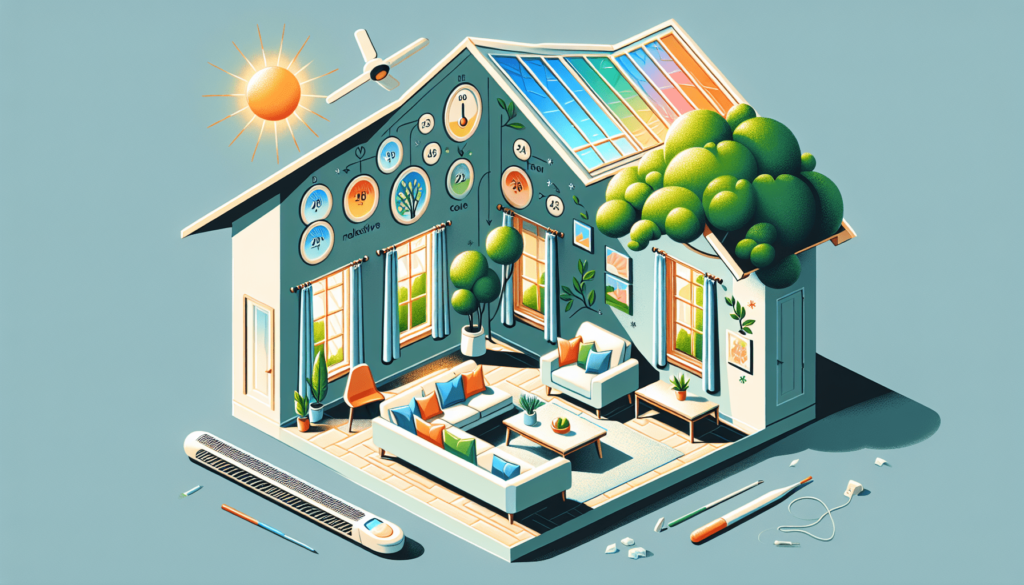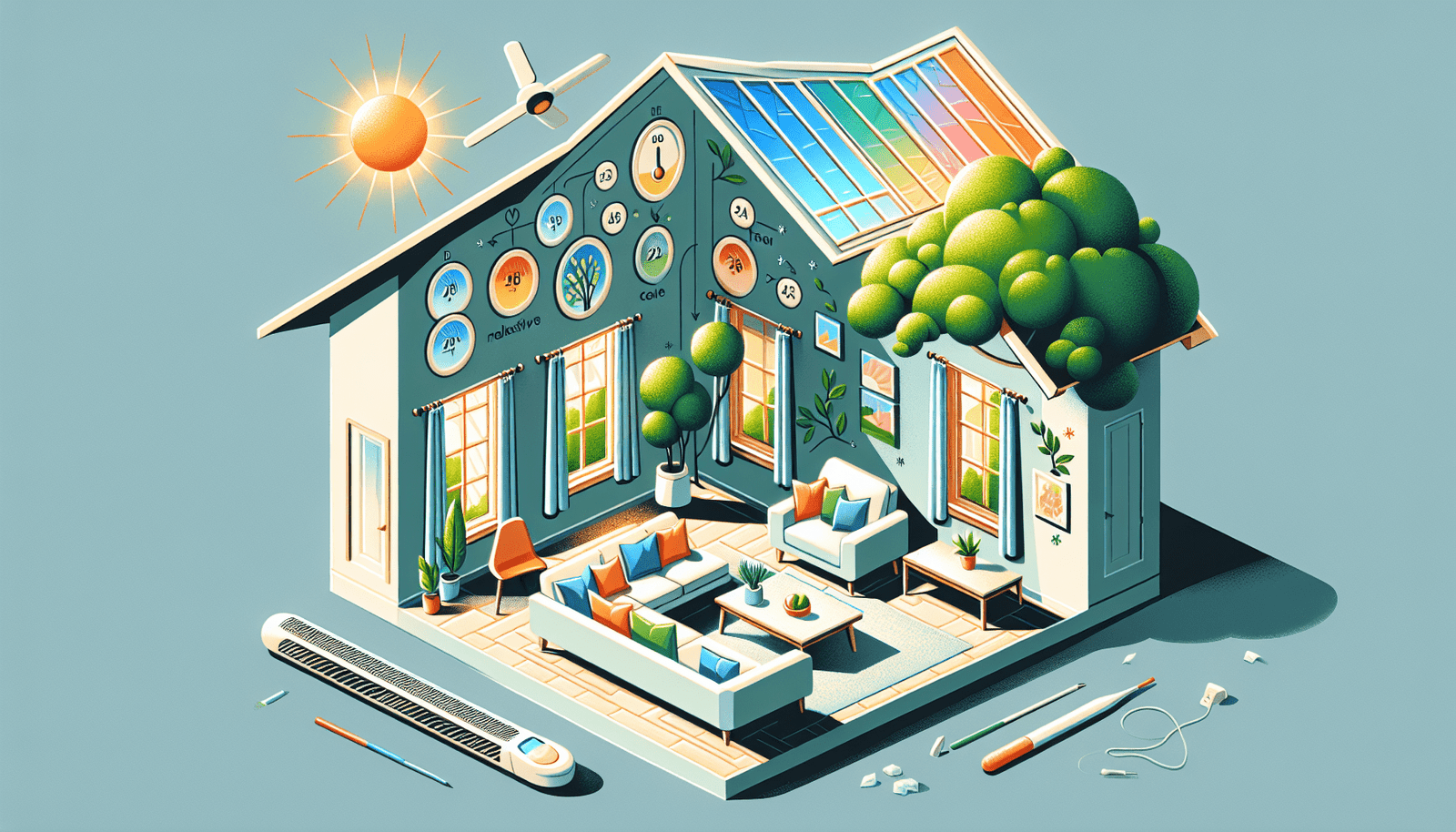In the scorching heat of summer, keeping your house cool becomes a top priority. No one wants to feel like they’re baking in their own home, right? Well, fear not! We’ve got you covered with 17 clever ways to beat the heat and turn your house into a cool oasis. From simple tricks like closing curtains during the day to more advanced techniques like installing ceiling fans and using proper insulation, we’ve got all the tips and tricks you need to keep your cool in the summer months. So sit back, relax, and get ready to say goodbye to those sweaty, uncomfortable days and hello to a refreshingly cool home. Let’s dive in!

1. Insulate Your Home
The first step to keeping your house cool during the summer is to properly insulate it. This will help keep the cool air inside and the hot air outside. Start by sealing any gaps or cracks around your windows and doors. This can be done with weatherstripping or caulking. Not only will this help keep the hot air out, but it will also prevent cool air from escaping.
Next, consider adding insulation to your attic. Heat tends to rise, so having proper insulation in your attic will help prevent it from seeping into your living spaces. Insulating the walls and floors of your home will also help keep the cool air in and the hot air out.
2. Use Energy-Efficient Cooling Appliances
Investing in energy-efficient cooling appliances can make a big difference in keeping your house cool while also saving on energy costs. Start by installing a programmable thermostat. This will allow you to set different temperatures for different times of the day, ensuring that your home is cool when you need it to be.
Using ceiling fans can also help circulate the air in your home and create a cooling breeze. Additionally, consider investing in an energy-efficient air conditioner. These units are designed to cool your home without using excessive amounts of energy.
3. Close Curtains and Blinds
Closing the curtains and blinds in your home can help keep the heat out and the cool air in. Keeping direct sunlight out of your home will prevent it from heating up and making your air conditioning work harder. Opt for light-colored curtains or blinds, as these will reflect more sunlight and heat.
For even better heat reduction, consider installing thermal curtains. These curtains are designed to block out both sunlight and heat, keeping your home cooler and more comfortable during the summer months.
4. Use Natural Ventilation
Utilizing natural ventilation techniques can help cool down your home without relying solely on air conditioning. Open windows strategically to create cross-ventilation, allowing fresh air to flow through your home. This can be particularly effective during cooler times of the day or when there is a breeze outside.
Using window screens will allow you to keep your windows open without worrying about bugs or pests entering your home. Additionally, installing attic and roof vents will help release hot air from your home, further aiding in cooling.
5. Create Shade
Creating shade outside your home is another effective way to keep your house cool during the summer. Planting trees strategically around your home can provide natural shade that will help prevent the sun from heating up your living spaces. If planting trees is not an option, consider installing awnings or shade sails outside your windows. These can help block out the sun and reduce the amount of heat that enters your home.
Using outdoor shades or umbrellas in areas where you spend time outside, such as a patio or deck, can provide relief from the sun’s heat and make your outdoor space more enjoyable during the summer months.
6. Use Cool Roofing Materials
Choosing the right roofing materials can have a significant impact on the temperature inside your home. Opt for light-colored roofing materials, as these will reflect more sunlight and keep your home cooler. Additionally, consider using reflective roof coatings, which can reflect heat away from your home.
For a more sustainable and energy-efficient option, you can even install a green roof. A green roof consists of vegetation and soil, which helps absorb heat and insulate your home, keeping it cooler during the summer.
7. Maintain Your Cooling Systems
Regularly cleaning and servicing your air conditioner is essential to ensure it operates efficiently and effectively. Over time, dust and debris can accumulate in your air conditioning unit, hindering its performance. It is recommended to have a professional clean and service your air conditioner at least once a year.
In addition to regular maintenance, cleaning or replacing the air filters in your cooling systems is crucial. Dirty or clogged filters can obstruct airflow, making your air conditioner work harder to cool your home. It is recommended to clean or replace air filters every one to three months, depending on usage.
8. Optimize Airflow
Having good airflow in your home can make a significant difference in keeping it cool. One way to optimize airflow is to keep indoor doors open. This allows air to circulate freely throughout your home, preventing hot spots from developing.
Using fans strategically can also help circulate air and create a cooling breeze. Consider placing fans near windows or in areas where you spend the most time, such as the living room or bedroom. Additionally, arranging furniture to allow for better airflow, such as not blocking vents or windows, can also improve the overall temperature in your home.
9. Control Indoor Heat Sources
Reducing the use of heat-generating appliances during the summer can help keep your home cooler. Avoid using the oven or stove excessively, as these appliances produce a significant amount of heat. Instead, opt for outdoor cooking or use a microwave, which generates less heat.
Using energy-efficient lighting, such as LED bulbs, can also help reduce heat emissions from lighting fixtures. Additionally, taking shorter showers can minimize the amount of heat and humidity generated in your home, helping to keep it cooler.
10. Opt for Natural Cooling Methods
In addition to these practical measures, there are also some natural cooling methods you can try. Using ice packs or cold towels on your body can help lower your body temperature and provide instant relief from the heat. Taking cool showers or baths can also have a similar cooling effect on your body.
By following these tips and implementing these cooling strategies, you can create a more comfortable and enjoyable living environment in your home during the hot summer months. Stay cool and beat the heat!

